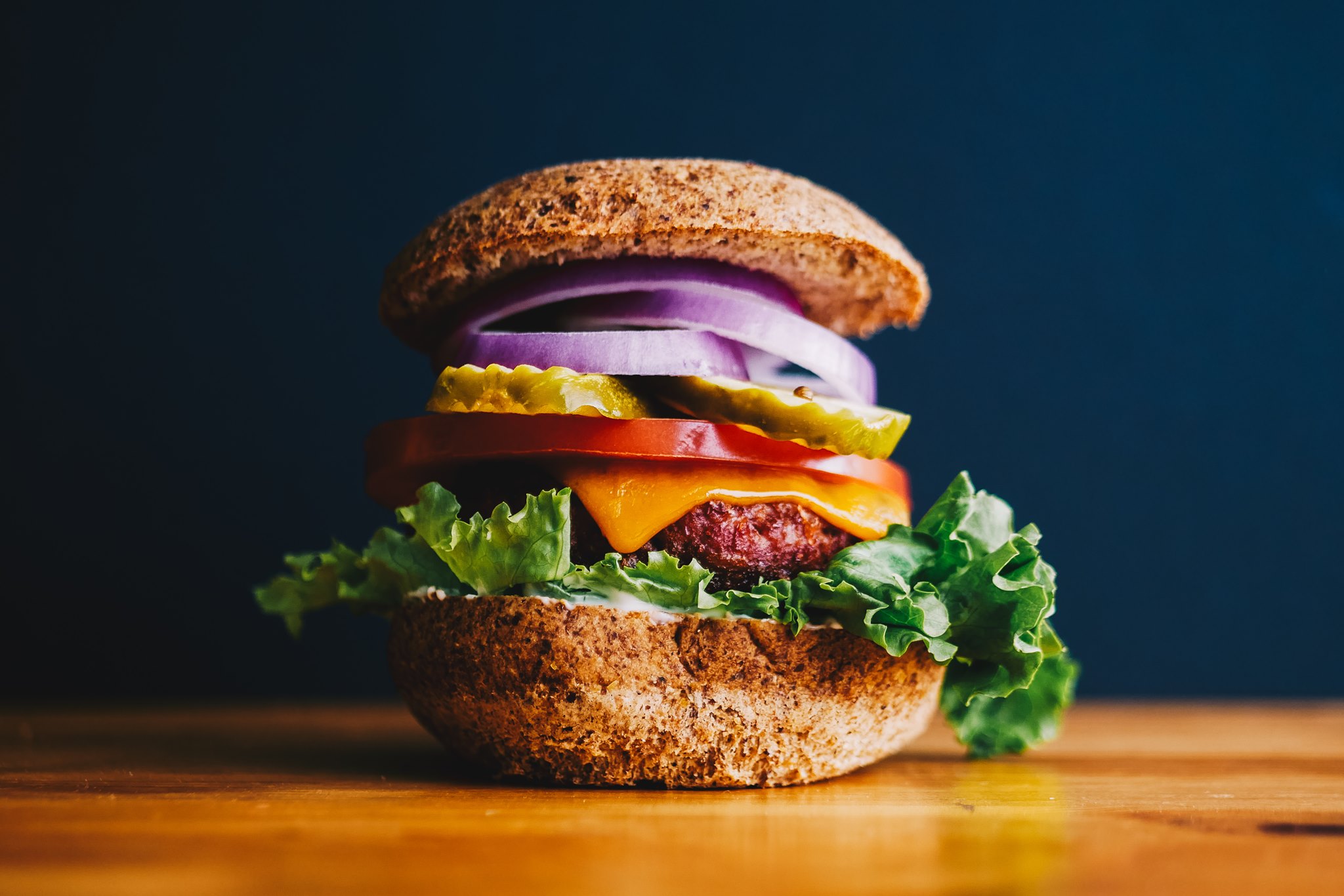Looking to begin a plant-based diet but not sure how or where to start? Whether you’re ready to get started with a full transition or you want to learn and ease into more plant-based meals, we’ve got top tips and info to help make plant-based eating part of your real-life wellness and much easier for your busy lifestyle. Holistic Nutritionist Denise Massie is a plant-based nutrition expert who helps us dig into the plant-based eating basics and answers all of our questions. Denise has not only reaped the healing benefits of plant-based eating in her own life, she also helps others gradually adopt plant-based eating habits that last. Denise empowers us with the info and motivation to finally make plant-based eating part of our wellness. Denise shows us that more plant power will not only prevent and heal illness but also help us feel lighter and more energetic to tackle our busy, demanding days.
We chatted with Denise to understand plant-based eating 101 – what it actually is, the health benefits and how to overcome 3 top barriers to starting (and maintaining!) a plant-based diet. Don’t miss Denise’s super handy plant-based meal template to make healthy meals faster and easier!
WEHL: Tell us a little about yourself and why you became interested in wellness and holistic nutrition.
DM: As a child and teen, I was a very picky eater, and generally unhealthy. I had allergies, asthma, repeated colds and infections, migraines, digestive problems, depression, anxiety. Not feeling good was my baseline. In my early twenties, I decided to take control of my wellness and learned to make and enjoy nourishing foods. My health improved dramatically. When I became a mother, I realized the enormous responsibility I had for the health and growth of another human being. I began learning all I could about nutrition and eventually went to school to study natural nutrition. Over the years, teaching cooking classes, working with clients in groups and one-on-one, I have witnessed first-hand the powerful changes that are possible through good nutrition.
WEHL: What is your philosophy on wellness? 
DM: Healthy eating can be simple, fun, and delicious! Wellness is a life-long commitment: it can’t be achieved through short bursts; it must be sustainable. The more we enjoy and are rewarded by the choices we make, the more we want to continue. I teach my clients how to incorporate health-supporting habits that fit with their goals and lifestyle.
You have a special interest in plant-based eating in your nutrition practice. What is plant-based eating and is it the same as a vegan diet?
The term “vegan” refers to what is excluded or not eaten: anything that comes from an animal. While the term plant-based refers to what is included. A vegan diet can be but is not necessarily healthy. The classic example is that Oreos are vegan. Just because a food is vegan, does not make it healthy. I prefer the term plant-based because it is more inclusive for those incorporating more plant foods in their eating as well as for those who avoid animal foods entirely. When someone is eating is plant-based, the majority or all of their food comes from plants. The focus is on plants.
WEHL: What are the top benefits of a plant-based diet?
DM: There is a wealth of research showing the protective benefits of a whole foods plant-based diet for diabetes, heart disease, high blood pressure, and certain cancers. These benefits come from the abundance of vitamins, minerals, fibre, phytonutrients, and antioxidants. It also comes from consuming less or crowding out foods that don’t serve our bodies. I consistently hear from my clients that after transitioning to this way of eating, their digestion and elimination improves, and they feel lighter and more energetic.
WEHL: What do you typically eat on a plant-based diet?
DM: The plant-based plate consists of vegetables, fruits, legumes, whole grains, nuts, and seeds. There are so many possible combinations of these foods that everyone’s diet will look different. Ideally it will include whole foods, variety, balance, lots of colour and flavour.
WEHL: How do you ensure you stay full and have enough energy on a plant-based diet?
DM: Vegetables and fruits are essential, but they’re low in calories and are digested quickly. It is important to include legumes (beans, chickpeas, lentils, split peas, tempeh, tofu) and/or nuts and seeds with meals and snacks. These foods provide needed protein and healthy fats that will leave you feeling satisfied until your next meal.
WEHL: How do you make sure you get enough protein as well as other nutrients that you would usually get from meat?
DM: It is easy to get enough protein when eating plant-based, provided you eat a variety of whole foods and consume enough calories. Protein-combining is a myth and seeking out high-protein foods isn’t necessary for most people. Of course, athletes, growing children, and pregnant women may have slightly different requirements. Vitamin B12 is primarily found in animal foods, but a supplement is an easy and inexpensive way to get this essential nutrient.
WEHL: What if you don’t digest beans and legumes well?
DM: Beans and legumes contain a type of carbohydrate that can be difficult to digest, causing gas and bloating. We rely on special bacteria in our digestive system to break down these oligosaccharides. Gradually increasing the amount of these foods in your eating allows the bacteria to adjust slowly as symptoms subside. In the kitchen, there are many things we can do to increase digestibility as well. The easiest way to avoid discomfort from these incredibly nutritious foods is to take a digestive enzyme that includes alphagalactosidase, such as Beano, with the meal.
WEHL: Do you have any tips for overcoming challenges or barriers to healthy plant-based eating?
DM:
Limited time to cook: If you’re not a confident cook, take some time to upgrade your kitchen skills. This will make a big difference in how long it takes to prepare a meal. If chopping vegetables is a barrier for you, consider using precut and/or frozen vegetables until your knife skills improve. You can also look to prepared or prepped meal delivery, or salads and other plant-based meals from your local grocery or health food store.
Lack of motivation: Determining your reason, your “why”, for moving toward plant-based eating will help you stay committed when things get tough. Any significant change will involve challenges, especially in the beginning. Be patient and kind with yourself. Acknowledge that the goal is progress, not perfection. Find yourself a community who shares your goals. Social media is a wonderful place to find others who will encourage and support each other in their plant-based journey. And if you are feeling uninspired, explore the wealth of vegan bloggers and YouTubers to recharge your enthusiasm.
Ed. Note: Wehl is a great place to get the motivation, support and accountability for a healthy lifestyle. You’ll even find more plant-based tips from Denise there! 😉
Unwillingness of others in your household to eat plant-based meals: The key to harmony in a mixed-eating household is respect. Agree upon the rule that no one can criticize the food or food choices of another. We cannot control the behaviours of others, only ourselves. You cannot force them to share your enthusiasm for plant foods, but you can set an example that they may choose to follow. To save becoming a short-order cook, preparing several meals at each sitting, look to meals that are easily adaptable to different preferences. For example, a sheet pan meal of roasted sweet potatoes, broccoli, and onions with seasoned tofu cubes for you and seasoned chicken for them, requires minimal extra effort and allows everyone to share a meal. Many meals can be made in this way, where the main difference is just the protein-rich portion. For other types of meals, keep a stash of portioned meals in the fridge or freezer so that you can have something delicious suited to you without any extra work.

WEHL: What tips do you have for someone who is not ready to fully transition to plant-based eating but would like to incorporate more plant-based meals?
DM: I recommend a gradual approach of incorporating new plant-based meals while slowly crowding out animal-based meals. Sometimes this can mean a simple swap of ingredients, such as soy milk for dairy milk in your coffee or tea, or a flax egg for a chicken egg in baking. Other times it requires finding a new recipe for an old favourite. Expand your repertoire of vegetables and find new ways to enjoy them. Take your time and move at your own pace for lasting change.
WEHL: How can seeing a Holistic Nutritionist such as yourself help support people with plant-based eating? What is typically involved in a first appointment?
DM: I have both professional and personal experience with this lifestyle. In addition to many years of working with plant-based clients, my family and I have been living this way for over 11 years. Where I see most people struggle is not in the generalities of this way of eating, but in the specifics. How do they reap the benefits of plant-based eating in a way that works for them? Everybody and every body is different. We each have different health priorities and health histories, lifestyles, traditions, schedules, likes and dislikes. I provide support in setting goals and overcoming obstacles, while answering questions and providing encouragement. I work with my clients to achieve sustainable change through lasting habits.

The first appointment involves me getting to know you and your needs, so I can best support you. From there I provide suggested areas of focus and we work together to determine first steps.
WEHL: Do you have a favourite plant-based recipe or meal idea you would like to share with us?
DM: I prefer using templates over recipes for most meals. A framework makes it easy to substitute ingredients based on likes and dislikes, seasonality, budget, and what’s on hand. My favourite meal template is the Buddha Bowl. Also known as a Nourish Bowl, it is a balanced meal that is endlessly variable and can be served warm or cold. I’ve created a free guide including some sauce recipes, that’s available on my website. Here is the basic outline:
Buddha Bowl Template:
Choose one from each the following categories:
-
- Leafy Greens (Raw): spinach, kale, spring mix, red leaf lettuce
- Whole Grain (Cooked): brown rice, quinoa, millet, sorghum, spelt, farro
- Legume (Cooked or Sprouted): lentils, chickpeas, black beans, kidney beans, tempeh, tofu
- Vegetable (Raw or Cooked – choose 2): carrots, celery, sweet potato, broccoli, cauliflower, brussels sprouts, red cabbage, bell peppers, tomatoes
- Prepared Sauce or Dressing: vinaigrette, peanut sauce, cashew cheeze sauce, lemon tahini
- Optional Topping: hemp hearts, pepitas, chopped green onion, sesame seeds
In a bowl, begin with a layer of leafy greens, then add the remaining ingredients like pieces of a pie. Vegetables can be raw or cooked (e.g., roasted, steamed). Drizzle with a sauce or dressing and some optional toppings and enjoy!
Connect with Denise Massie, RHN:
- Web: www.denisemassierhn.com
- Wehl: @denisemassie_rhn
We invite you to join our all-in-one healthy lifestyle app at Wehl.com!



